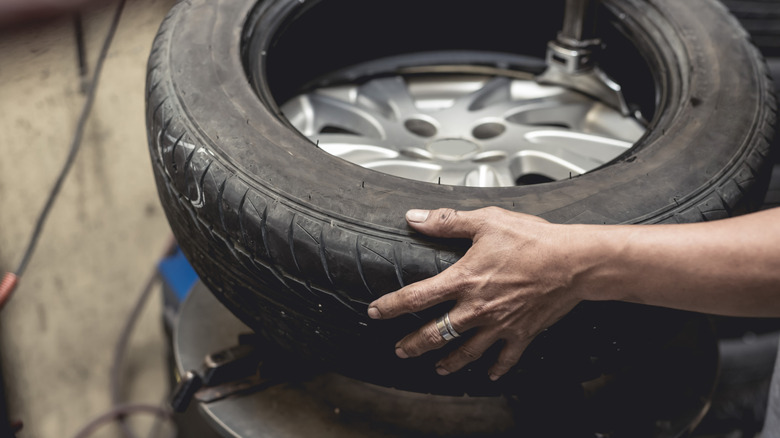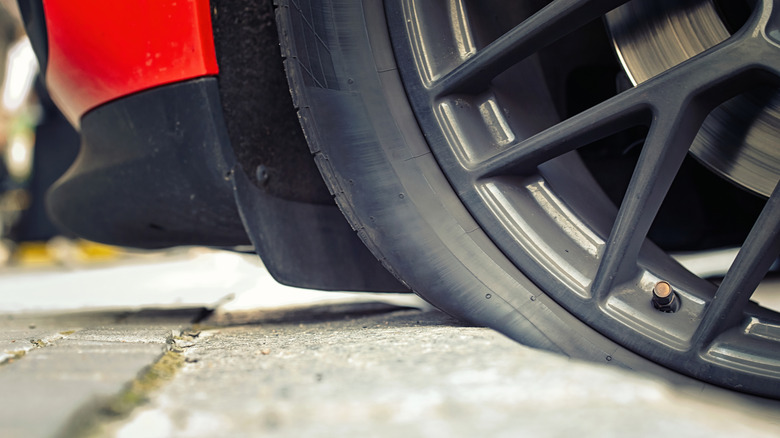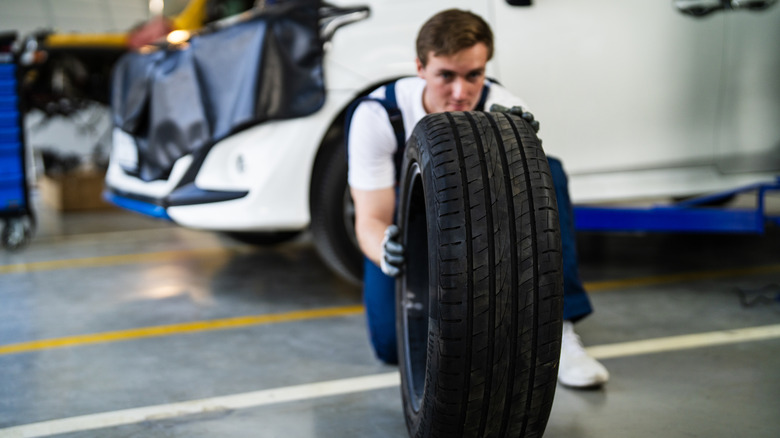What Is A Tire Bead And How Do You Avoid Damaging It?
When people talk about tire condition, it feels like most of the focus is on tread patterns and sidewall strength. However, the tire bead is just as critical to your vehicle's tire safety. It's the thick reinforced edge of your tire, and it's what forms an airtight seal against the wheel rim, and you won't want to overlook it if you care about keeping your tires in good condition.
The tire bead sits at the very base of the tire sidewall and comes into direct contact with the wheel's inner edge. (If you're looking at the tire removed from the vehicle, the bead is the U-shaped inner ring that goes all around the inside of the tire.) Once the tire is mounted and inflated, the pressure forces the bead tightly against the wheel, effectively sealing in air and anchoring the tire in place at the same time.
The bead is reinforced with ultra-strong wires (either copper, brass, or bronze-coated steel). These wires help it maintain its shape as well as grip the wheel. There's also a specially formulated rubber filler around the wires that stiffens the bead and adds an extra layer of protection from damage.
What causes damage to the tire bead?
Although tire beads are built to be tough, they're far from indestructible. Even something as simple as too much air in the tire can damage the bead. Driving on an underinflated or overinflated tire puts uneven stress on the bead, which can cause the bead to slip out of its groove or distort the tire.
Hitting the curb can also do some major damage to the tire bead. When a tire's sidewall slams against a curb or some other hard object, the force of the impact can dislodge or even tear the bead. Even if everything looks okay after impact, there's the possibility of invisible problems (like damaged internal cords or a broken seal). Bead damage can also come from tire installation itself. If a technician uses the wrong tools or forgets to lubricate the components when mounting the tire, the excessive force can stretch or tear the bead.
How to keep bead damage from happening
The key to avoiding bead damage is to stay on top of your tire maintenance. For starters, always keep your tires inflated to the manufacturer's recommended PSI. This helps make sure the bead stays tightly pressed against the wheel and prevents slipping or distortion. You should also check your tire pressure at least once a month (or more, if necessary — especially before long trips or major changes in weather).
Be careful around curbs, potholes, and off-road hazards. Even one sharp hit to the sidewall can compromise the bead. Drive cautiously over rough terrain and avoid "bumping" curbs when parking. And if you do hit something, take a look at the tire as soon as possible (or, better yet, have a professional look at it so they can check for visible and invisible damage alike).
If you think your tire bead might be damaged, it's best to have it looked at by a tire shop. In some cases, the bead might have just come unseated and simply needs to be put back into place with the proper tools and some lubrication. If it turns out the bead is torn, frayed, or the internal cords are compromised, the tire will likely need to be replaced.


